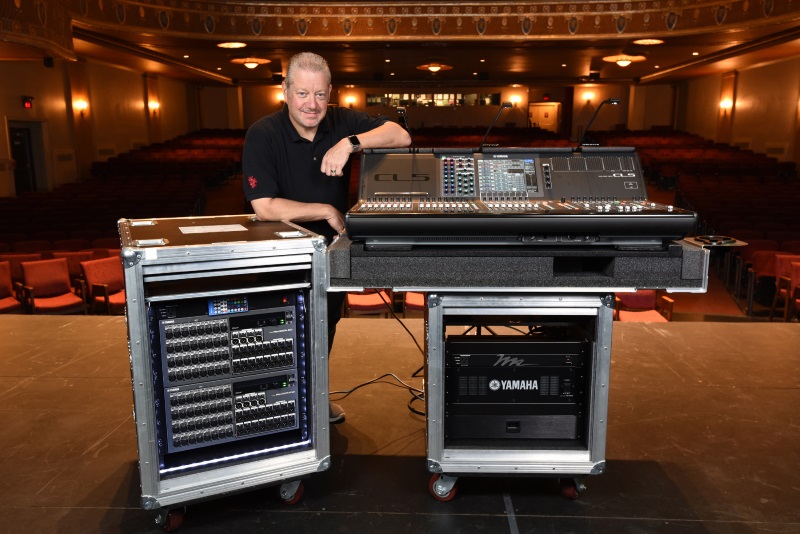
What was to become the central component in the upgrade landed fortuitously on Boulevard Carroll’s New Jersey loading dock when Yamaha sent Cioffi its new Rivage PM10 console for evaluation.
“I first used the PM10 on a show I’ve done a thousand times in a theatre I’ve worked a thousand more,” he recalls. “With no extraneous variables in the way, it was just me and the console, and I was impressed. Not long after, I brought it down to the State Theatre, gave Willie a simple tutorial on how to turn it on and get started, and told him to try it on something familiar like I had done. He was nervous, no question, and said to me, ‘man, this thing is a beast, look at all this stuff…’ But I talked him through it and he was sold.”
With the core component of the upgrade chosen, Cioffi and Boulevard Carroll business manager Anthony Fischetta joined forces with Weist to flesh out the design in detail. Once the venue’s VP of theatre operations Joe Stoltman and board chairman Scott Fergang moved the non-profit organization’s funding process into place, the blueprint was brought to reality this summer with the acquisition of a Yamaha Rivage PM10, CS-R10 control surface, DSP-R10 DSP engine, and RPio622 and RPio222 I/O racks.
As Weist configured it in the house, his PM10 system has a total of 96 inputs and 32 outputs. Both RPio racks live onstage, while the core DSP-R10 central processing brain was given a home in the lighting booth right behind the front of house position.
“The way I have the system configured, our RPio222 is 16 in and 16 out,” he explains. “That’s my setup for everyday use. For eight out of 10 of the smaller shows that come through, that’s all we need. For larger shows I wheel out the RPio622 rack and interface it using the fiber of Yamaha’s TWINLANe audio network protocol. The fiber network runs all the way to the DSP. From there it’s Cat-6 to the console.”
Capable of being extended in any direction, the Cat-6 lines from the DSP brain allow the CS-R10 control surface to be placed just about anywhere the cables can reach without the need to haul heavy, supporting racks around as well.
“Another benefit of this portion of the design,” Weist elaborates, “is that if I’m doing a setup – for a Broadway show for instance – where they bring in all of their own production right down to the PA, consoles, everything. I can take the CS-R10 control surface, wrap it up, and put it away to free up space. Then even if something comes up and they need to use one of the house mics – say they have to do a pre-show announcement – I can just use my iPad to turn on that channel via the house DSP just like I would any other day.”
To Each His Own
Ninety-six (96) channels of copper feed an audio split onstage that provides input to the house RPio racks as well as a pair of Dante-equipped Rio3224-D I/O racks used for monitors with a Yamaha CL5 digital desk that were also part of the upgrade.
“No one wants gain sharing, that’s why I wanted the copper split,” Weist adds. “The house and monitor world are two independent rigs, each with their own input, their own digital, their own everything.”
That said, he points out that one of the main features of both the house and monitor systems is that neither is confined to their respective locations. In keeping with the underlying philosophy that flexibility and versatility should serve as the underpinning core of the upgrade, one way to view the current state of affairs is that both the house and monitors are touring systems capable of operating within a permanent installation.
